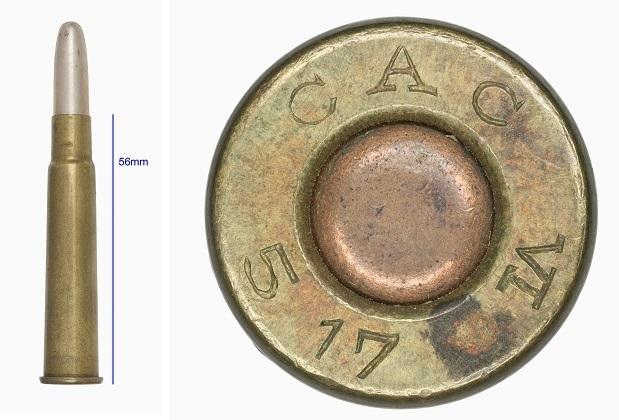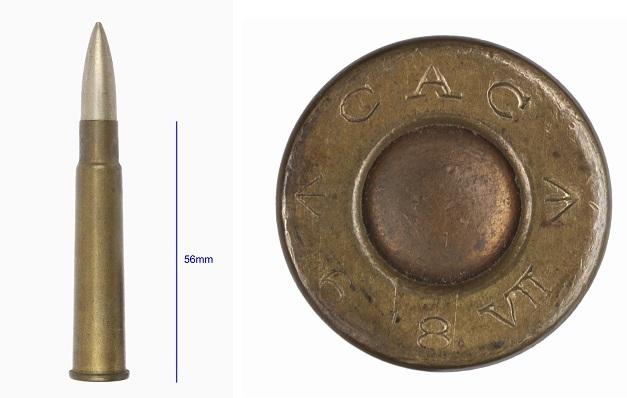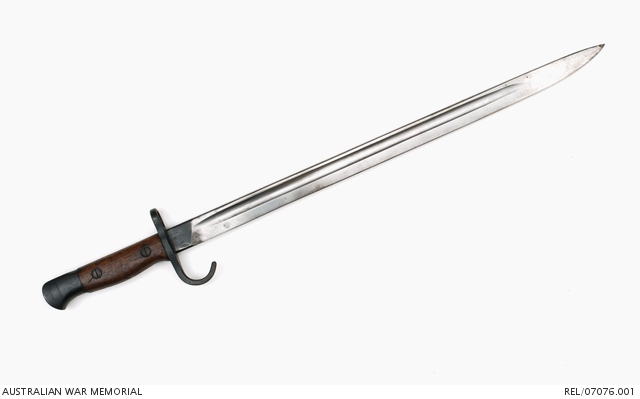Australian issued rifles and bayonets of the First World War
During the First World War the principle long arms issued to Australian Forces were the Short Magazine Lee Enfield No 1 Mk III (SMLE No 1 Mk III) and the Short magazine Lee Enfield No 1 Mk III* (SMLE No 1 Mk III*). The difference between the two marks was that the SMLE No 1 Mk III had a magazine cut-off which was abolished on the SMLE No 1 Mk III*.
During Australia’s commitment to the Gallipoli Campaign, Australian forces were issued with British manufactured SMLE No I MK III rifles. Australia’s Small Arms Factory at Lithgow had commenced production of SMLE rifles in 1912, but their production facilities were unable to produce the wartime quantities of rifles and bayonets required until late 1915. Lithgow rifles reached Australian forces in quantity in 1916.
The Lithgow SMLE serial Number and letter prefixes are:
- No Prefix – 1912-18
- A Prefix – Commenced in 1918
- B Prefix – commenced in the early 1920’s
- C Prefix – during 1941
- D Prefix – late 1941 to 1942
- E Prefix – from 1942 until 1944
- F Prefix – 1944 until 1945
The standard bayonet for the SMLE No 1 MK III and the SMLE No 1 Mk III* rifle was the Pattern 1907 Bayonet. Every SMLE rifle produced had a bayonet with a matching serial number issued with it. However, for a variety of circumstances, most Pattern 07 bayonets and SMLE rifles ended up being mismatched during the service life of the rifles and bayonets.
The bayonets issued to Australian soldiers at the beginning of the First World War and Gallipoli were Pattern 1907 Bayonets which featured a hook quillon. Later in 1915 the hook quillon was dispensed with, being removed from some older bayonets and new bayonets being manufactured without.
Serial numbers stamped on rifles and bayonets were primarily for factory auditing purposes. These serial numbers also served battalion armourers to establish inventories within their allocations of rifles and bayonets. As rifles were issued to soldiers, armourers kept basic distribution records. However, the practice of issuing a soldier with a matching rifle and bayonet serial number listed to a soldier’s name, became difficult to regulate and fell into disuse fairly rapidly as the contingencies of warfare impacted events.
In general, a soldier who was destined for combat service was issued with rifle and bayonet which he kept until his service in a combat role was no longer required at which point the rifle and bayonet were returned to the battalion armourers. The caveat being that the soldier may have been killed, wounded, the weapon became unserviceable, lost etc., through the weapon’s combat service life. If the rifle survived combat life and was handed back to the armourers, it would then be either or reissued, refurbished, sent back to the factory for rebuild, broken up for parts or written off.
Australian soldier with his SMLE – note the canvas action cover which protects the breech of his rifle.
Except in rare circumstances, such as the rifle being specifically built as a sniper rifle, soldiers never kept log books on the rifles they were issued with. As a result, it is almost impossible to trace the history of a rifle to a soldier’s name in most instances. This is further complicated when obsolete rifles and bayonets have been released on the civilian market for disposal.
The overwhelming ammunition used by Australian soldiers on Gallipoli for the SMLE No I Mk III rifle was Mark VI ball ammunition, although Mk VII ball ammunition was also used and was primarily used through the rest of the war.


Note: Many SMLE rifles that survived the First World War were refurbished by British and Australian small arms factories. Refurbished SMLE rifles have had their original serial numbers struck out on the knox form (where the serial number is located on the front of the receiver- normally the right hand side) and a new one added to replace the struck off serial number, usually underneath the struck off serial number.
The following links are good sources for additional information on Lee Enfield rifles and their ammunition:
http://www.imfdb.org/wiki/Short_Magazine_Lee-Enfield_(SMLE)
http://www.lithgowsafmuseum.org.au/milproduction.html
http://www.enfieldresource.com/
http://www.nzmr.org/enfield.htm
http://webpages.uidaho.edu/stratton/Enhistory.htm
https://sites.google.com/site/britmilammo/-303-inch/-303-inch-cordite-ball-mark-vi-to-viiiz





